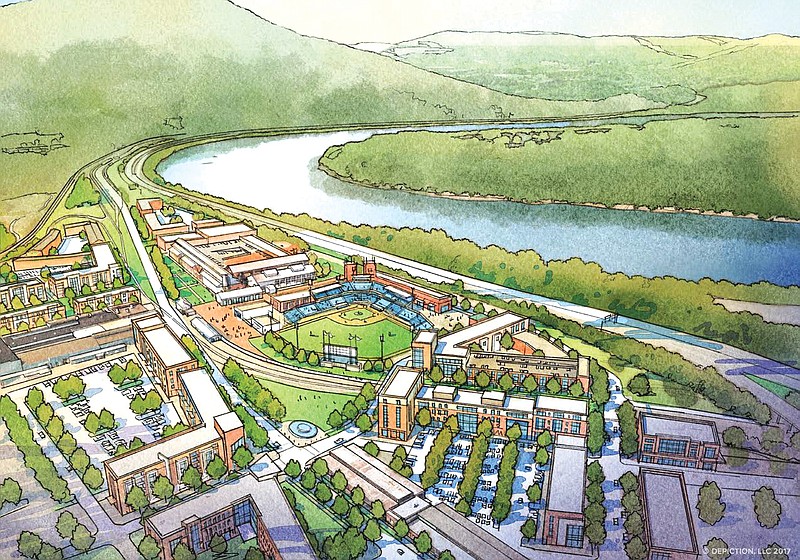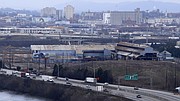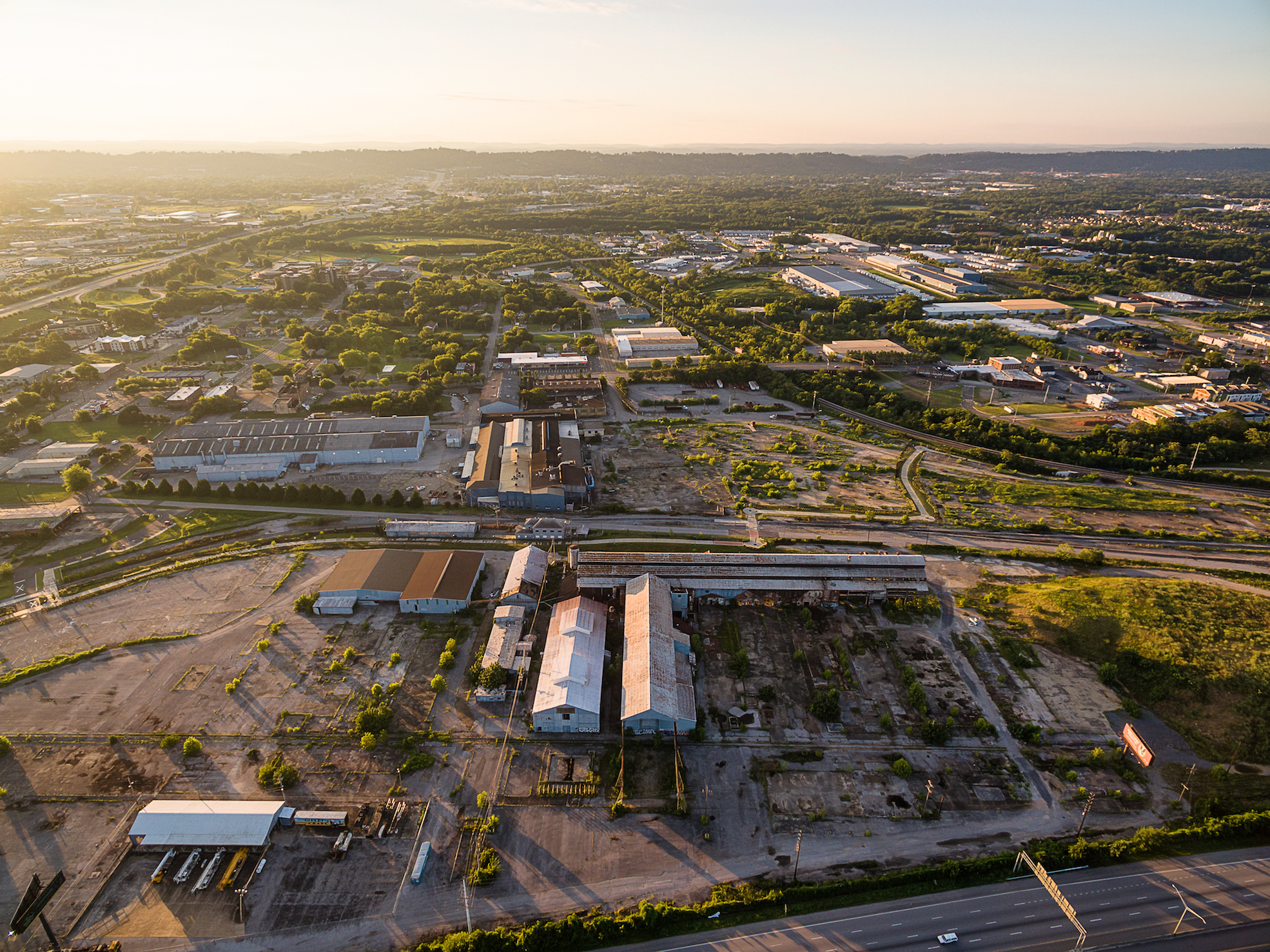For all the recent growth of Chattanooga's downtown, the South Broad Street area has captured a mere 1 percent of the more than $1 billion of new investment in the central city over the past three years, according to a new study of the area.
But a new plan suggests the 400 acres south of Interstate 24 along and around Broad Street could join in Chattanooga's central city renaissance with the addition of new sports facilities, parks and zoning rules to allow new types of urban housing and retail development.
What’s next?
The Chattanooga Design Studio will present and discuss the South Broad Street District Plan from 5 to 6:30 p.m, Monday night in meeting room 1A at the Development Resource Center, 1250 Market St. The plan will go to the planning commission in March and be presented again to the Chattanooga City Council for approval in April.
The Chattanooga Design Studio, using the ideas voiced by 250 people who attended a series of public meetings last fall, suggests building a new baseball stadium for the Chattanooga Lookouts, a new track and sports facility at Howard High School and new types of housing and parks will bring more residents, businesses and visitors south of the freeway.
The 128-page report said the Southside should capitalize on plans for a new Interstate 24 exit, the extended Tennessee Riverwalk and the availability of 140 acres on the former site of the Wheland and U.S. Pipe foundries for new retail, housing and stadium development.
The study suggests relocating the Chattanooga Lookouts AA minor league baseball stadium into the area "can serve as a catalyst" and "serve as anchor to new investment." Similar stadium projects in six other comparable cities studied show an average of 1.1 million square feet of new development was attracted within a quarter mile of the new stadiums.
At the same time, the study said demolishing the current Lookouts stadium atop Hawk Hill downtown along Highway 27 in downtown Chattanooga would open up more riverfront land and development to generate more tax revenue for the city.
The stadium could be key to reviving the former Wheland Foundry and U.S. Pipe & Foundry site, which has been idle for more than a decade since the foundries shut down.
"We heard over and over again that many in the community wanted the foundry site to be a vibrant gateway," Eric Myers, the head of the Chattanooga Urban Design Studio, said in a presentation Tuesday to the Chattanooga City Council.
In the report, Myers said a new stadium "becomes a destination for many different types of events," which will encourage retail, entertainment and other development within a quarter mile of the stadium.
"An entertainment and sports venue was clearly identified as part of the vision for this area," the report said.
The study also suggests that Hamilton County schools consider bringing back a middle school on the campus of Howard High School and recommends a new sports facility be built at Howard, including a new stadium and track.
Hamilton County has already announced selection of Barge Design Solutions to lead the design of a new stadium and track for Howard High School. Russell Morehead, Barge's vice president and client services leader, said his company is eager to move forward "to support the continued growth and success of the Howard and Southside communities."
But critics have questioned the promised payoff from new stadiums and whether the city and county should try to finance a new stadium for the privately owned Chattanooga Lookouts. The Beacon Center of Tennessee, a free-market conservative think tank in Nashville, continues to push for a public referendum on any tax assistance for a new Lookouts stadium.
"Despite the overly optimistic predictions that never seem to live up to reality, we believe it is not the proper role of government to take taxpayer money and hand it over to wealthy sports team owners," Justin Owen, president of the Beacon center, said in a statement Tuesday. "But if local elected officials believe that spending public resources on sports stadiums is what taxpayers want, they should have no problem putting those decisions on the ballot."
Chattanooga Mayor Andy Berke and Hamilton County Mayor Jim Coppinger have yet to propose a way to fund a new Lookouts stadium or other development in the area. But in an introduction to the South Broad Street plan, Berke said "it is vital for Chattanooga to have a South Broad District which is parallel to the downtown's continued economic growth, productivity and progress." Coppinger said he "fully supports this report" and hopes it "will help guide elected leaders" in making plans for the Southside.
The study said the city could establish a tax increment financing (TIF) district to use additional taxes spurred by development in the area to pay for the public improvements in the district, including the sports facilities, parks, streets and walkways. In such an area, the city uses increases in property taxes generated by new development to repay investments made in streets, parks and other public improvements.
A citizens group that has criticized other tax increment financing districts in Lookout Valley and downtown expressed more general support for the idea of such a tax-funding system for the Southside.
"This will be a classic TIF district in that it affects a blighted area and there is potential for significant job growth and gains to the city's tax base and this is an area that may need some public funds as a catalyst to realize its potential for redevelopment," said Helen Burns Sharp, founder of Accountability for Taxpayers Money (ATM).
But Sharp said she worries that with 30 percent of the property in Chattanooga already tax-exempt or under some tax-favored status, taking more property off the tax rolls for general government funding could cause financial problems if not done appropriately.
The development plan also calls for redeveloping the Chattanooga Gardens neighborhood around Howard school with a mix of housing for diversity and a range of incomes.
To encourage more housing and retail in the area, the study suggests the development of urban buildings with shallow or no-front setbacks from the street and allowing buildings in the area to be up to five stories in height. To ensure a variety of housing options, the study suggests that form-based zoning be implemented in the area to favor small flats, town houses and similar building types and allow residential homes to be up to three stories in height.
Following the demolition of public housing and the Great Recession, the area has lost significant population base, according to the study. The 400-acre Southside area in 2015 had only 1,158 residents, the lowest population density anywhere in or around the downtown area. Most of those living in the area tend to be lower income and older, according to the study, and only 10 percent of those in the area own their own home, compared with a citywide average of 53.4 percent.
Kim White, president of the River City Co., said the Foundry site and other areas in the Southside "is an incredibly important connector to downtown and is primed for large scale redevelopment that can really add to the fabric of our urban area."
Myers said he also wants to seize control of the area around the future I-24 interchange to keep it away from big-box retailers and preserve it for smaller, neighborhood commerce and mixed uses. He presented street-level drawings to the City Council showing a vision of mixed-use neighborhoods and commercial areas, along with aerial views locating a new Lookouts ballpark and other infrastructure.
Ezra Harris Park, which is almost unknown, needs to be refreshed with new amenities such as tennis courts and connected better to the Howard School across a tree-lined boulevard rather than a four-lane highway.
Councilman Darrin Ledford called the slides of residential squares and tree-shaded parks set off from commercial areas "very visually stimulating."
"I think you've found a good fan base here. This is phenomenal work," he said.
Councilman Russell Gilbert called it a "beautiful vision" and asked about getting that same level of detail in other areas besides the urban core.
"I've been here eight years and I've heard urban, urban, urban, all this side of the ridge." People on the other side of Missionary Ridge are due for some visioning and resources too, he said.
Councilman Erskine Oglesby Jr. said he's been working with Myers and Charita Allen, deputy administrator for economic and community development in the mayor's office. He congratulated them for a good job of getting a massive amount of public input.
"I'm excited it started in District 7," he said.
Contact Dave Flessner at dflessner@timesfreepress.com or Judy Walton at jwalton@timesfreepress.com.


